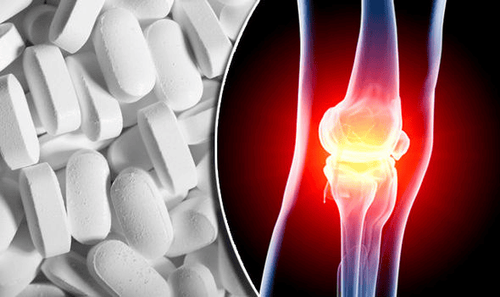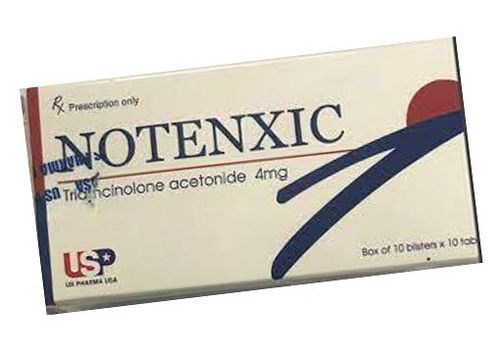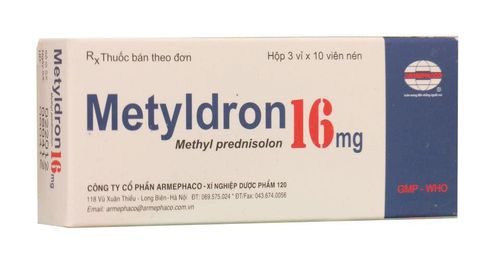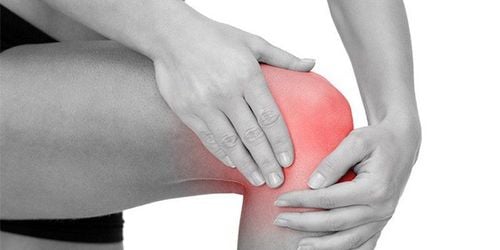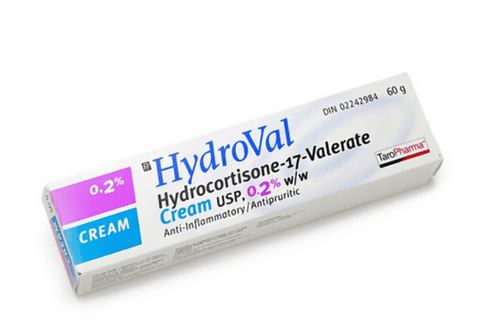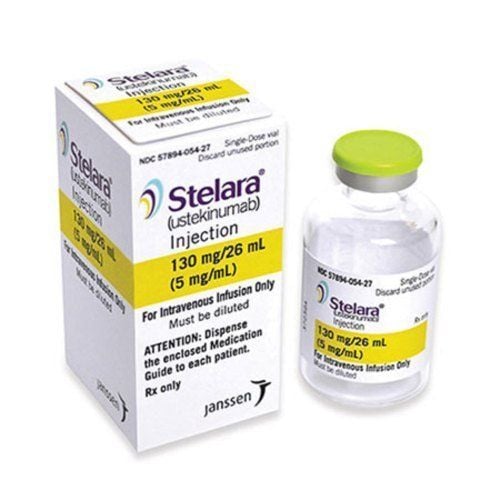This is an automatically translated article.
Pharmacort drugs belong to the group of endocrine drugs that control severe allergies or are inoperable by conventional treatment trials in asthma, atopic dermatitis,... Pharmacort should be used as to have good effect?
1. What are the effects of Pharmacort?
Pharmacort medicine has the main ingredient triamcinolone acetonide, which is a synthetic glucocorticoid with fluorine that has the following effects:
Glucocorticoid of natural and synthetic origin is an adrenocorticotropic steroid that is easily absorbed from the gastrointestinal tract Anti-inflammatory, reducing pain, anti-allergy and immunosuppressive joint injection to treat diseases related to bones and joints such as rheumatoid arthritis, bursitis, osteoarthritis,... Intramuscular injection to treat neurodermatitis , scar treatment, autoimmune diseases,... Pharmacort is often indicated in the following pathological cases:
Rheumatoid arthritis Osteoarthritis Degenerative bursitis Tendonitis Tendonitis Psoriatic arthritis Psoriatic arthritis Generalized body muscle Liken flat Inflammatory reaction after dental surgery Steven Johnson syndrome Angioedema Keloid scars, hypertrophic scars annular granulomatous alopecia areata Contraindications to Pharmacort drugs include:
Patients with hypersensitivity to any drug Any ingredient in Pharmacort Patients with severe infections, unless anti-infective measures are taken Specific infections Persons with unexplained thrombocytopenic purpura Patients with systemic fungal infections or tuberculosis Do not administer intravenously, intra or epidurally, intraocularly and injected into the Achilles tendon Precautions for use Pharmacort medicine for the elderly
2. Dosage of Pharmacort
Pharmacort is administered by injection at the joint or intramuscularly and only by qualified medical personnel. Do not arbitrarily use the drug at home without the supervision of a doctor, avoid injecting into infected skin areas, inject deep intramuscularly to avoid subcutaneous fat atrophy. Depending on the subject and the treatment goal, the dose of Pharmacort will be different:
For adults and children over 12 years old:
Intra-articular injection depends on the size of the joint and the disease condition. small, small lesions (joints of fingers, toes, wrists,...): 20mg dose (0.5 ml) Large joints, large lesions (knee joints, arm joints,...): 40-80 mg (1-2ml) Intramuscular deep into the large gluteal muscle: 40-80 mg (1-2ml) is used depending on the size of the lesion. Maximum dose 100 mg/time, interval between injections from 1-5 weeks For children aged 6-12 years:
Initial dose: 40 mg deep intramuscular injection (1 ml) or divided by degrees age, weight and severity of illness Do not give Pharmacort to children under 6 years old
3. Pharmacort side effects
In some patients when using Pharmacort, side effects may occur such as:
Injection site reactions, infections Headache, injection site abscesses, anaphylactoid reactions, Adrenal suppression, Secondary adrenocortical insufficiency Development of Pituitary insufficiency Salt and water retention Hyperglycemia Calcium deficiency, osteoporosis, joint pain Mood swings, depression Convulsions, epilepsy, increased intracranial pressure Blurred vision, cataracts Peptic ulcers Atrophy skin, thin skin, subcutaneous hemorrhage, pustular dermatitis Lupus erythematosus, angioedema
4. Be careful when using Pharmacort
Some general notes when using Pharmacort include:
Research shows that triamcinolone crosses the placenta, so it is recommended to use Pharmacort only when absolutely necessary and the benefits to the mother outweigh the risks. Triamcinolone is excreted in breast milk, if the mother takes high doses, it can cause adrenal suppression in the baby Do not inject Pharmacort intravenously. Patients taking corticosteroids often have salt and water retention, causing edema. Pharmacort should be used with caution in patients with congestive heart failure, hypertension, or renal insufficiency. Adrenal insufficiency secondary to the drug can be reduced by gradually reducing the dose, which may persist for many years. Months after discontinuation Pharmacort should be used with caution in patients with peptic ulcer, diverticulitis or nonspecific ulcerative colitis, as steroids may increase the risk of perforation of the gastrointestinal mucosa. The vaccine is contraindicated in patients receiving high doses of Immunosuppressive corticosteroids
5. Drug interactions with Pharmacort
Pharmacort drugs can increase or decrease the effect of anticoagulants
Pharmacort drugs reduce the effect of antidiabetic drugs because triamcinolone increases blood glucose
The effect of antihypertensive drugs, diuretics is affected by triamcinolone increases blood pressure and hyperkalemia
Triamcinolone reduces plasma concentrations of anti-tuberculosis drugs (Isoniazid)
Co-administration of injectable drugs containing Triamcinolone with digitalis-class inotropes increases digitalis toxicity
Liver enzyme inducers such as Barbiturates, Carbamazepine,... increase the clearance of Pharmacort drugs, reduce the therapeutic effect
During the injection process, patients using more oral NSAIDs will increase the risk of stomach ulcers and bleeding digestive tract.
The above is important information about Pharmacort, before using, patients need to read the instructions carefully and if they have any further questions, they should contact their doctor for in-depth advice.
Please dial HOTLINE for more information or register for an appointment HERE. Download MyVinmec app to make appointments faster and to manage your bookings easily.




